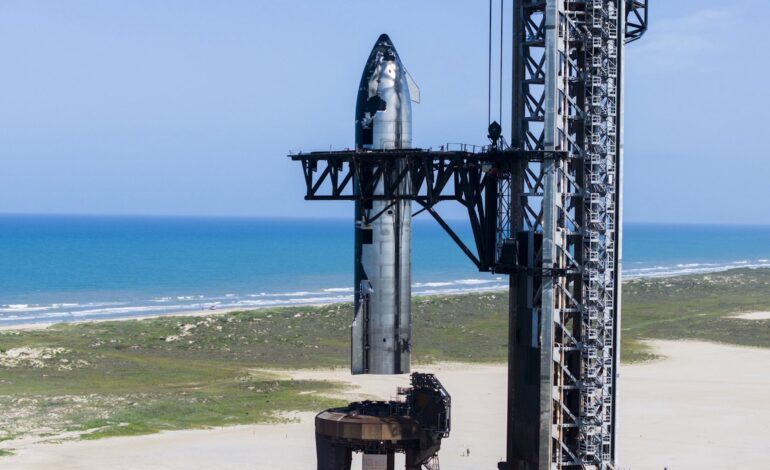SpaceX Aims for Success in Starship’s Tenth Test Flight

SpaceX is preparing for the tenth test flight of its ambitious Starship rocket on August 24, 2025, following a series of setbacks that have raised questions about the spacecraft’s viability for future missions, including a planned trip to Mars. The launch window opens at 19:30 ET, and the event will be live-streamed on SpaceX’s website and social media platforms.
This upcoming flight comes after an investigation into the previous test, which took place on May 27 and ended in failure when the vehicle disintegrated during reentry. That incident marked yet another setback in a string of challenges faced by Starship, which has struggled to meet its mission objectives throughout its testing phases.
New Modifications and Testing Goals
In response to earlier failures, SpaceX has implemented several modifications aimed at enhancing the rocket’s reliability. This includes hardware adjustments and operational changes, as outlined by the company. For the tenth flight, SpaceX plans to conduct a payload deployment test involving 10 Starlink simulators. Unlike previous tests, these simulators will follow a suborbital trajectory and are expected to burn up upon reentry rather than remain in orbit.
Additionally, SpaceX will alter its approach to the Super Heavy booster, which will not be caught at the launch mount this time. Instead, the booster will target an offshore landing point in the Gulf of Mexico to evaluate its landing capabilities. During the descent, one of the booster’s three engines will be shut down deliberately to test the backup system, with the remaining engines executing the final landing burn.
Addressing Previous Failures
The Federal Aviation Administration (FAA) has approved this latest test after concluding an investigation into the previous flight. The FAA determined that the failure was due to structural issues leading to a dangerous mixing of methane and liquid oxygen, resulting in ignition. To mitigate this risk, SpaceX intends to adjust the booster’s descent angle to lessen aerodynamic forces.
SpaceX has also responded to an explosion that occurred on June 18 at its Massey facility, which destroyed the Starship prototype intended for this flight. The anomaly was traced back to damage in a composite overwrapped pressure vessel (COPV) used to store nitrogen. In light of this, the company will operate COPVs at a reduced pressure and implement additional inspections before loading reactive propellants.
Starship’s testing year has been tumultuous. The seventh test flight in January resulted in the upper stage exploding approximately eight-and-a-half minutes after launch. The eighth flight in March saw six of the nine Raptor engines fail during ascent. May’s test, while achieving the planned velocity, ended with a loss of control due to a propellant leak, leading to another disintegration.
With these modifications and a renewed focus on reliability, SpaceX is hopeful that the tenth test flight will mark a turning point for the Starship program, ending a challenging streak of failures and paving the way for future missions.






